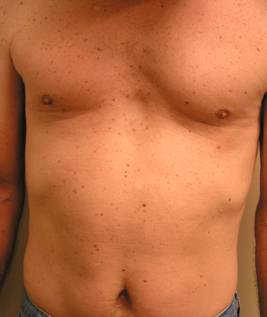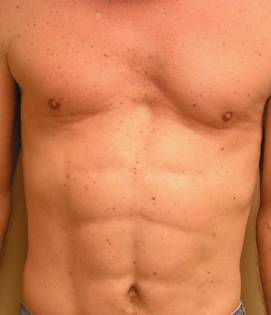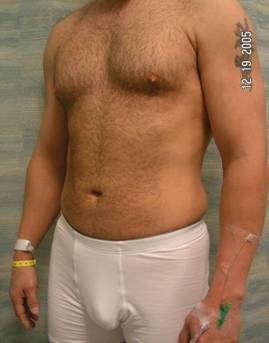Sunday, October 28, 2007
13159
Abdominal Etching: Clinical and Technical Measures for Achieving Predictable Outcomes
Abdominal Etching is a procedure used to enhance the appearance of the abdominal wall musculature. As originally described, the procedure was advocated in athletic males and was associated with a high success rate and low complication rate. While this procedure continues to have advocates, many surgeons offering abdominal etching have noted a lack of reproducible results and, in some cases, exceedingly poor outcomes. The most common complaints relate to: (1) the inability to create the correct degree of etching with a failure to enhance the muscular appearance; (2) the creation of skin contour deformities not in-line with abdominal muscles; and (3) the need for revision surgery to correct contour problems. The author retrospectively reviewed a series of etching procedures including 32 cases over 4.5 years. The technique was carried out on 24 primary and 8 secondary cases. Results indicate that when accurately performed abdominal etching can lead to a successful enhancement of the muscular appearance and happy patients. Complications included seroma (6), hypertrophic scars (3), and contour depressions requiring revision (2). All patients reported an improvement in the appearance of the abdominal musculature and satisfaction with the procedure was high (86%). The keys to successful outcomes include: (1) appropriate patient selection; (2) surgical technique; and (3) clinical judgment and postoperative management.
The author advocates a strict patient selection policy. A careful medical history should be obtained and exclude patients that are presently or have been heavier than 20% of ideal body weight. Age is not a criterion for exclusion, although, younger patients are more likely to be suitable candidates. On physical examination, ideal candidates should have a proper layer of fatty tissue to achieve the best outcome. A pinch test is very important and should be performed on all patients. The pinch test should demonstrate at least 1 cm but no more than 2 cm of fatty deposits. The abdominal skin should be healthy, strong and fairly immobile. Hypermobility may suggest the inability of the skin to completely retract after etching.
Surgical technique begins with appropriate markings. The superior central depression between the rectus muscles is palpated and marked. Next, the tendinous inscriptions of each muscle are palpated and similarly marked. Lastly, the Linea Semilunaris at the lateral edge of each muscle is identified and marked. A natural result is best achieved when etching is completed asymmetrically. Therefore, the finishing touches when marking include allowing for certain individual characteristics. The markings should never be exact mirror images as this could result in a mechanical and unnatural looking abdomen after surgery. A series of liposuction cannulas is used to achieve the appropriate level of etching. Etching begins over the midline with a 5 or 6 mm cannula to aggressively remove fat from the deep layer. The inscriptions and semilunaris lines are similarly treated. The surgeon should switch to a 2 mm cannula to remove fat from the superficial layer. A Gilliland cannula is used to complete the operation. The fat tissue between the etching lines can be liposuctioned when indicated.
Clinical judgment is critical in achieving the desired results and avoiding complications. This procedure can be unforgiving, especially, as it relates to contour irregularities. Additionally, not all patients require liposuction of the fat tissues between etching lines. One should avoid liposuction in the intervening tissue in patients with a history of abdominal liposuction. Experience guides the surgeon in determining when the etching effect has been attained. Post-op management includes selective compression in the area. Seromas are common, small, but capable of affecting the abdominal contour and requiring treatment. Cortisone injections help to alleviate lumps of fatty necrosis often seen after surgery. The author concludes that abdominal etching is a viable procedure with the potential for associated complications. Abdominal etching can be carried out with a high likelihood of success by most seasoned surgeons. 

View Synopsis (.doc format, 69.0 kb)


